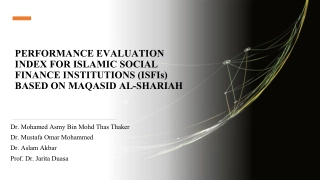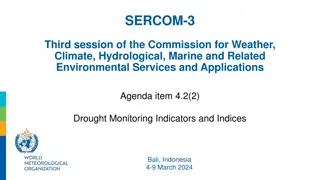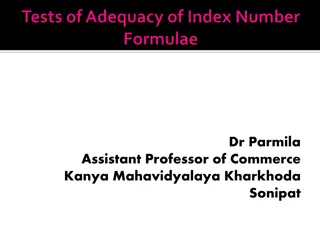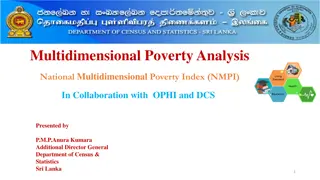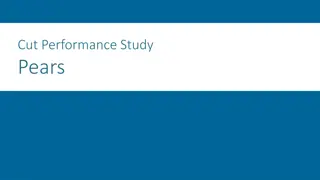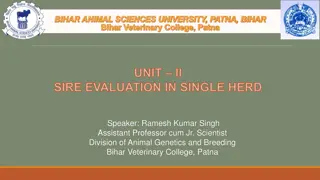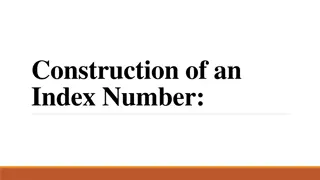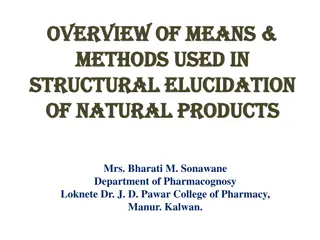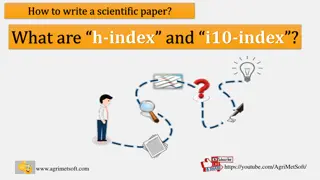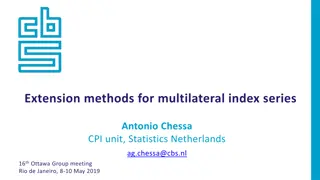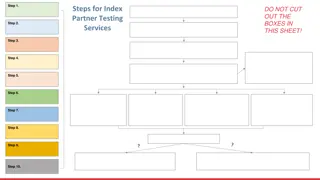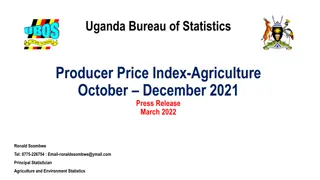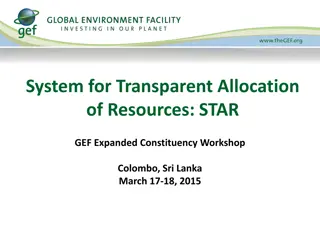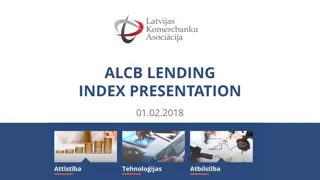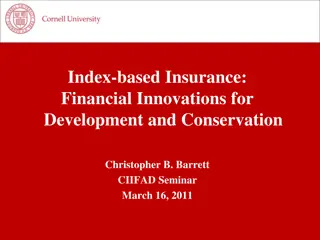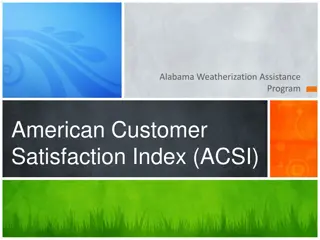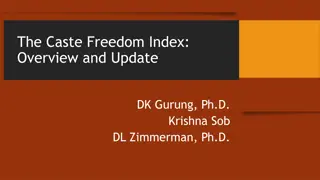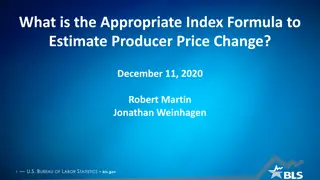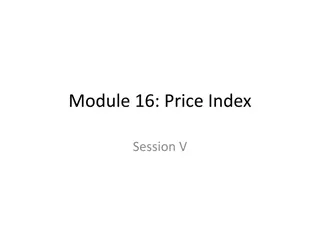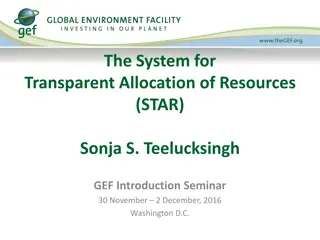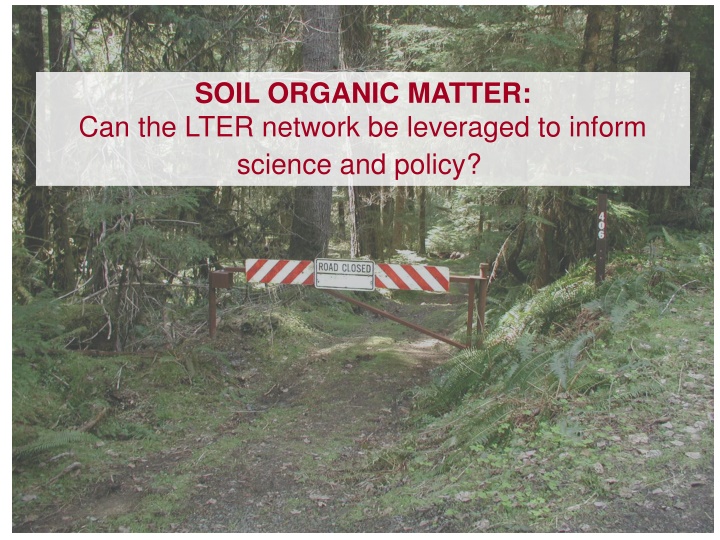
Leveraging LTER Network for Soil Organic Matter Science and Policy
Explore the importance of soil organic matter (SOM) in the global carbon cycle and how the LTER network can inform science and policy. Discover the potential impact of changing environmental factors on SOM dynamics and the implications for long-term soil health. Gain insights into detrital input and removal treatments (DIRT) and their role in understanding soil carbon stabilization.
Download Presentation

Please find below an Image/Link to download the presentation.
The content on the website is provided AS IS for your information and personal use only. It may not be sold, licensed, or shared on other websites without obtaining consent from the author. If you encounter any issues during the download, it is possible that the publisher has removed the file from their server.
You are allowed to download the files provided on this website for personal or commercial use, subject to the condition that they are used lawfully. All files are the property of their respective owners.
The content on the website is provided AS IS for your information and personal use only. It may not be sold, licensed, or shared on other websites without obtaining consent from the author.
E N D
Presentation Transcript
SOIL ORGANIC MATTER: Can the LTER network be leveraged to inform science and policy?
The world is changing: why focus on soil organic matter? SOM is a major component of the global C cycle, containing more C than plant biomass and the atmosphere combined The C flux between soils and the atmosphere is large, with soil respiration about 10 times the C flux due to fossil fuel combustion Interactions among the biological, chemical, and physical processes regulating SOM accumulation, stabilization, and turnover are poorly understood
What will change: Temperature Precipitation Floods Drought Seasonality Land-use, forest harvest, direct effects on litter production
What controls soil C stabilization and destabilization? temperature, vegetation, mineralogy, management? Plant detrital inputs?
Detrital Input and Removal Treatments (DIRT) Central Goal: to assess how rates and sources of plant litter inputs control the long-term stability, accumulation, and chemical nature of soil organic matter in forested ecosystems
LTER and ILTER DIRT Sites Wisconsin Harvard Forest H.J.Andrews Bousson S kf k t Michigan Santa Rita
H.J. Andrews DIRT, 10 years Mg C in Fraction per g Soil 50 1.65 1.85 2.00 25 2.40 2.65 >2.65 0 2x litter 2x wood control no input no litter no root
High-elevation (800-1100m), 15-22 ha headwater basins WS08 (control), WS06 (clearcut, burned 1974), WS07 (shelterwood 1974, overstory removed 1984 Low-elevation (450-700m), 9-10 ha headwater basins WS09 (control), WS106 (clearcut, not burned 1975), 300 300 250 250 CUM DOC FLUX CUM DOC FLUX 200 200 ws08 150 150 ws09 ws07 100 100 ws10 ws06 50 50 0 0 0 50 100 150 200 0 50 100 150 200 CUM QAREA_CM CUM QAREA_CM Mid-elevation (450-1000m), 60-100 ha headwater basins WS02 (control), WS10 (clearcut, burned 1962-66) Low to high-elevation (450-1600m), 600-6200 basins MACK (old growth), LOOKOUT (25% clearcut 1948-70), 300 300 250 250 CUM DOC FLUX CUM DOC FLUX 200 200 150 150 ws02 MACK 100 100 ws01 LOOKOUT 50 50 0 0 0 50 100 150 200 0 50 100 150 200 CUM QAREA_CM CUM QAREA_CM
Questions of interest: What contributes to stable SOM root inputs or shoot inputs? What is stable SOM? What is the role of land-use change (CWD too) on SOM stocks and chemistry? Does priming by root activity influence either stable or labile SOM? How does microbial processing and activity affect SOM stabilization? Role of fungal to bacteria? Mycco? Foodweb? How do differences in soil texture and mineralogy affect the balance between SOM stabilization and destabilization? (cross-site) When will soils saturate or will they? Role of vegetation change? Temperature change? Climate change?
If not common experiments what about common measurements? Considerations: Sample to what depth? Bulk density? Rock volume? Sample by depth or horizon? Total C and N or density fractions or --- ? Problems with thatch in grassland plots?
DIRT protocol for grasslands We have generally replicated all treatments 3 times, and have found that to be a minimum number of replicates 5 is generally preferable.
TREATMENTS UNMANIPULATED CONTROL CONTROL over the surface of the plot. vegetation is cut at the end of the growing season and spread evenly NO AG LITTER vegetation is cut at the end of the growing season and is removed, weighed, and saved. Grasses are cut so as not to harm roots or regrowth NO ROOTS no plant growth is allowed within the plots; frequent clipping and herbicide is used sparingly as vegetative growth demands. Litter from NO LITTER plots is combined and mixed, evenly divided among NO ROOTS plots, and spread evenly over the surface of each plot. NO INPUTS no plant growth is allowed within the plots; herbicide is used sparingly as vegetative growth demands. DOUBLE LITTER vegetation is cut at the end of the growing season and spread evenly over the surface of the plot as for the CONTROL treatments. The same mass of litter that was added to NO ROOTS plots is harvested from off-site and added to each plot. Note: all treatments can be crossed with a fertilization treatment
Questions of interest: What contributes to stable SOM root inputs or shoot inputs? What is stable SOM? What is the role of land-use change (CWD too) on SOM stocks and chemistry? Does priming by root activity influence either stable or labile SOM? How does microbial processing and activity affect SOM stabilization? How do differences in soil texture and mineralogy affect the balance between SOM stabilization and destabilization? (cross-site)
total soil respiration 371 (100%) 618 (100%) 648 (100%) decomposition litterfall V E G E T A T I O N new above- ground litter S O I L HF 138 BOU 183 HJA 145 11% above- ground 7% 10% old above- ground litter 26% 23% 15% root litter O M below- ground below- ground litter 30% 56% 52% 33% root respiration 14% 23%

